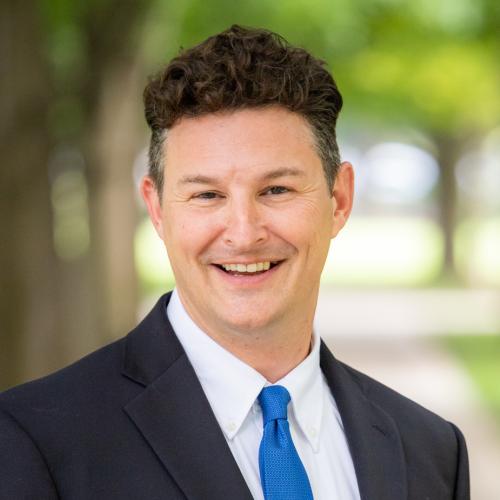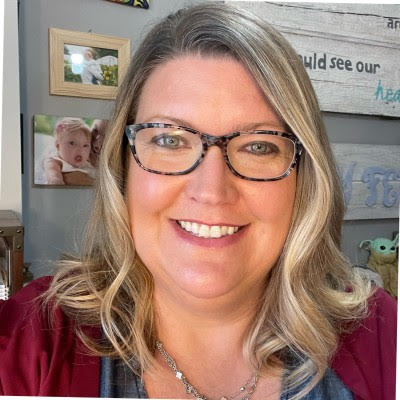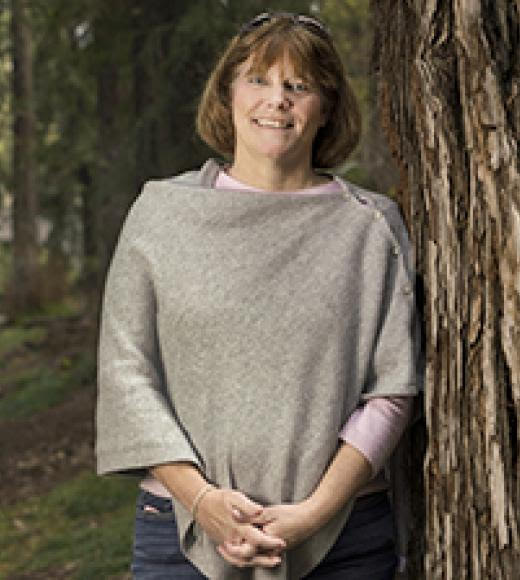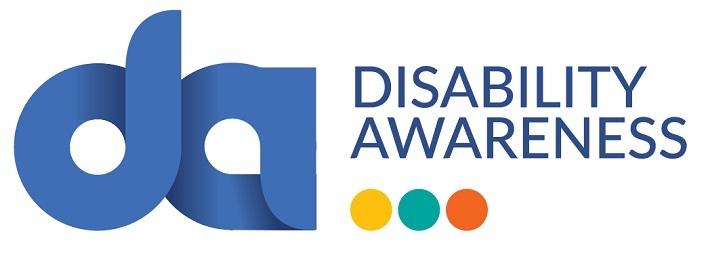This month is Disability Awareness Month, and we highlight several diagnoses. These include dyslexia–the most prominent learning disability, attention deficit hyperactivity disorder (ADHD), and Down syndrome. Disability Employment Awareness Month is also marked in October. Having awareness and understanding diagnoses, needs, and structures can impact success. Thus, PIE’s October blog shares a few insights and resources on these important topics from a panel of guest contributors who are invested in Catholic schools. Many thanks for their generous contributions!


Dyslexia
By Michael Fagella-Luby, Ph.D.
Professor of Special Education at Texas Christian University
National Consultant for PIE
Dyslexia is a term used to describe individuals with specific learning disabilities (SLD) who have an imperfect ability to recognize printed words. More specifically, if successful reading (understanding what you read) is the product of an individual’s ability to pronounce words and then know what those words mean, individuals with dyslexia are characterized by difficulties in the first step of word recognition, which involves sound-symbol correspondence, decoding, and spelling. Like all students diagnosed with SLD, those with dyslexia are varied in their skills and challenges, have adequate to above average cognitive functioning, but unexpectedly struggle in school due to a mismatch in the way they learn and the way they are taught through typical literacy instruction.
The good news is that with over 50 years of research, we now know that with explicit phonics instruction and school implementation of a Science of Reading curriculum, individuals with dyslexia can learn to read efficiently. Moreover, when schools adopt structured literacy programs as their core way to deliver early reading instruction in grades K-3, literacy rates improve for all students!
Dyslexia Resources:
https://dyslexiaida.org/
https://www.dyslexia.yale.edu/research-science/ycdc-research/
https://www.asha.org/
 Attention-Deficit/Hyperactivity Disorder
Attention-Deficit/Hyperactivity Disorder
By Sean J. Smith, PhD
Professor of Special Education at the University of Kansas
National Consultant for PIE
Attention-deficit/hyperactivity disorder (ADHD) is often used to describe the fidgety child who moves throughout the classroom, is prone to interrupt others, and is the first to be distracted. Individuals with ADHD can show inattentiveness, hyperactivity-impulsiveness, or combined symptoms. ADHD is usually diagnosed in one’s childhood, but it can last into adulthood. Considering the different types, one child with ADHD might have trouble holding attention to a task and struggle with organization, while another might fidget constantly, talk excessively, blurt out answers or have trouble waiting turns. Despite the differing symptoms, each child would meet criteria for ADHD. Each diagnosis requires, to various degrees, a persistent pattern of behavior across a sustained period of time within a particular age range.
While many might think medication is the primary method for treatment (and yes, it has its role), a growing number of interventions and therapies have been developed to support, structure, and teach children the proven strategies to self-monitor their behaviors over time. Interestingly, these are the same practices that are increasingly being used to support children during the pandemic to further assist in executive functioning skill development. Perhaps this is a silver lining of COVID–educators are regularly embedding techniques that address the needs of children with ADHD while targeting the entire classroom.
ADHD Resources:
https://chadd.org/understanding-adhd/
https://www.understood.org/
https://www.nimh.nih.gov/health/topics/attention-deficit-hyperactivity-disorder-adhd
 Down Syndrome
Down Syndrome
By Jill Reffett
Board of Directors for the National Down Syndrome Congress
Director of Business Development & Reimbursement- Maphabit, Inc.
Down syndrome, a genetic condition where an extra copy of the 21st chromosome develops, occurs in approximately one in every 700 live births in the United States, making it one of the most common genetic variations. Children with Down syndrome may be delayed in developmental milestones such as walking, talking, eating and even toileting compared to typically developing children. They may also have intellectual disabilities and behavioral delays. Individuals with Down syndrome can also have other co-occurring diagnoses such as ADHD and autism.
If you know one person with Down syndrome, you know one person with Down syndrome. They each have the same capacity for happiness, sorrow, and fear that you and I do, so one of the greatest dangers are generalizations, such as assuming all people with Down syndrome are always so happy.
Presume competence in these children. Consider that the decisions you make today are not just about this academic year or the next 12 months of IEP or ISP goals, but about how what they learn, or are not allowed to learn and experience, will impact them ten, 20, or 30 years from now. Their needs, cares, and wants are as individual as they are, and when building their educational plan, these individual characteristics should be considered. According to the National Down Syndrome Congress, individuals with Down syndrome benefit from loving and supportive homes, early interventions, therapies, medical care, high-quality education, positive public attitudes, and welcoming communities. It is believed that approximately 20 percent (some research suggests up to 39 percent) of individuals with Down syndrome also have autism, commonly referred to as a dual diagnosis, and they can benefit greatly from interventions more commonly utilized in the autism community.
Down Syndrome Resources:
https://www.ndsccenter.org/
https://www.ndsccenter.org/wp-content/uploads/Inclusion-Works-Parts-1-and-2.pdf
https://ds-asd-connection.org/
Journal of Catholic Education, Special Issue: Inclusion in Catholic Schools https://digitalcommons.lmu.edu/ce/vol23/iss2/
 Employment
Employment
By Beth Foraker
Founder/Director of the National Catholic Board on Full Inclusion
Co-Director of the Redwood SEED Scholars Program @ UC Davis
Competitive, integrated employment for adults with intellectual and developmental disabilities continues to be a pervasive, systemic problem given that most are socially isolated and stuck in poverty. Yet when people with disabilities are employed, the research tells us they are great employees. They show up to work on time, steal less often than their non-disabled colleagues, are reliable and resourceful, and they work hard. Best of all, non-disabled colleagues in the workplace say that their peers with disabilities make the workplace better. So, why is it so difficult for those with disabilities, specifically those with intellectual disabilities, to get a job? Part of it comes down to education. Students with intellectual disabilities are routinely segregated and with expectations to learn less. There is no outcry if they struggle with literacy or important math concepts and so poor educational outcomes are expected for this group of students. Sadly, the poor employment outcomes are a natural result.
Inclusive college programs with their focus on competitive, integrated employment opportunities are proving these expectations wrong and demonstrating that when young adults with intellectual disabilities are offered opportunities, support, and high expectations, success in the workplace is possible. Seeing the person with a disability as a whole person, with skills, brilliance, and personal motivation, can allow employers to see opportunities for their presence in the workplace. Helping students to develop an understanding of their assets and needs for support will allow them to actively communicate with their workplace where and how they can be successful. Creating a pipeline of job coaches who hold high expectations, see the possibilities of the employee with disabilities, develop task analyses and an understanding of the workplace requirements and who work to champion the presence of those with disabilities in the workplace is important to building inclusive workplaces. Building opportunities requires three key ideas: inclusive K-12 education, a pipeline of job coaches, and employers who understand the intrinsic value of people with disabilities in their workplace. This is intentional, methodical work...and the data tells us that we are all better for it. Let us begin!
Employment Resources:
https://acl.gov/programs/employment/employment-resources-people-disabilities-and-families
https://disabilityin.org/resource/disability-inclusion-employment-best-practices/
https://www.forbes.com/sites/forbesbusinesscouncil/2021/07/21/creating-a-more-accessible-and-inclusive-workplace-for-people-with-disabilities/?sh=592b3a1b2d90
Please join us for A Little Slice of PIE on Tuesday, October 11, 2022 from 7:00 - 7:30 p.m. EST. PIE will walk you through valuable resources as an extension of this information. To register for the session and obtain the recording, please visit: A Little Slice of PIE.
Applications for PIE 7 are open! Consider joining the journey to inclusion: APPLY HERE.
 Alliance for Catholic Education
Alliance for Catholic Education
